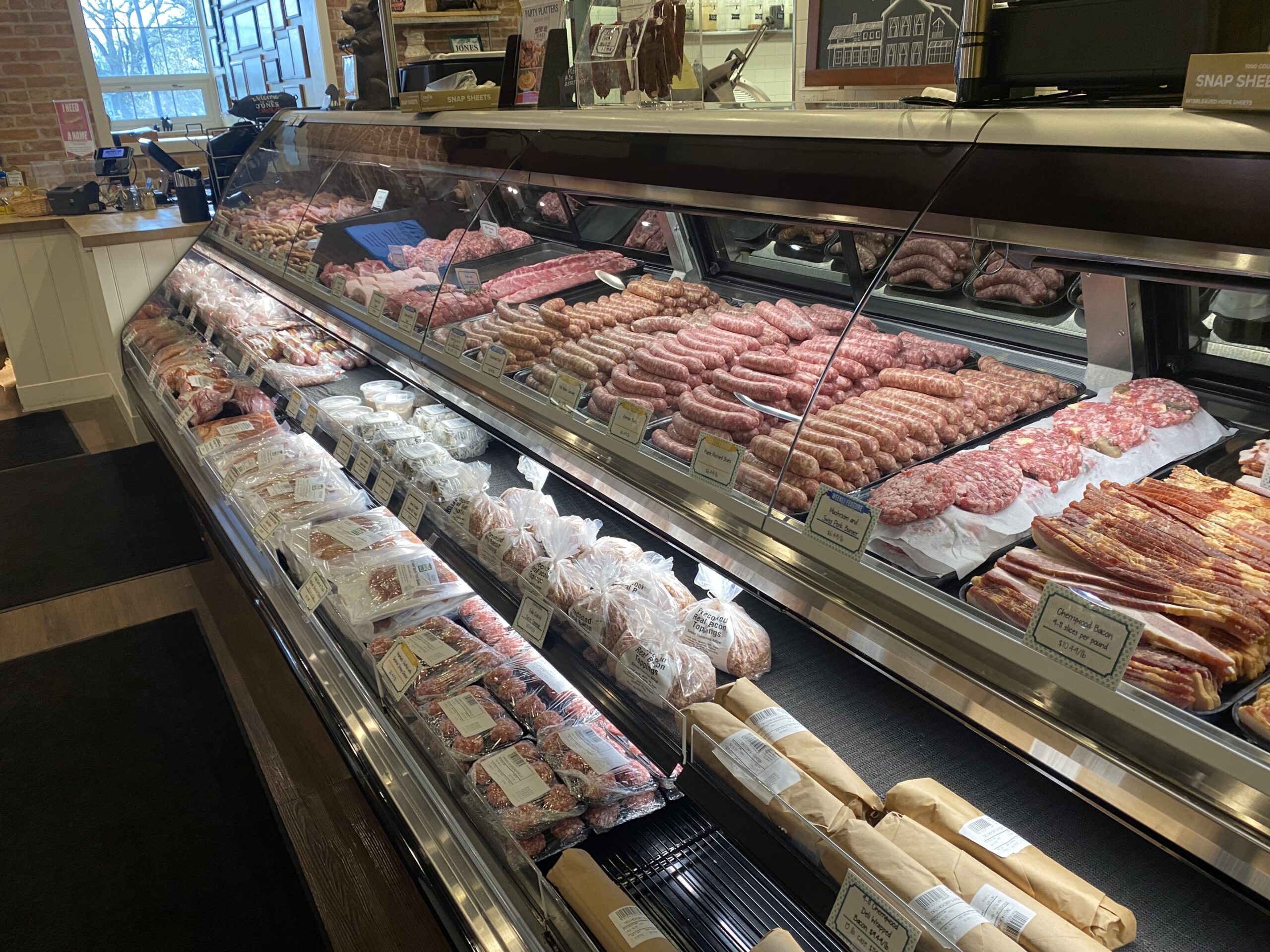Get the Best Offers on Fresh Meat at Bagley Farms Meat Market Edwardsville IL
Get the Best Offers on Fresh Meat at Bagley Farms Meat Market Edwardsville IL
Blog Article
Discover the Art of the Butcher's Cut in a Modern Meat Market
In the ever-evolving landscape of modern meat markets, the butcher's cut has transcended its standard roots, combining olden workmanship with contemporary techniques. What truly establishes the modern-day butcher apart is their capacity to create a deeper link between consumers and the origins of their meat.
Evolution of Butchery Strategies

The mid-20th century saw butchery strategies additionally fine-tuned by scientific insights into muscle mass biology and meat aging, boosting both inflammation and preference. Developments like vacuum packaging and refrigeration prolonged item shelf-life, permitting butchers to branch out offerings and boost top quality control. This period likewise noted the surge of specialized equipment, such as band saws and meat slicers, which raised precision and efficiency in meat processing.
The 21st century has actually presented electronic innovation right into the butchery realm. Electronic systems now aid in tracking animal provenance and optimizing cuts to satisfy details client preferences. Additionally, a rebirth in artisanal butchery has actually emerged, blending traditional skills with contemporary understanding to accommodate customers seeking moral and sustainable meat options. This development highlights a dynamic interplay in between practice and advancement, conference modern needs while maintaining the craft's heritage.

Recognizing Meat Cuts

Recognizing the ins and outs of meat cuts is essential for both butchers and customers looking for top quality and worth. Each cut comes from a various component of the pet, passing on unique tastes, structures, and cooking approaches. Proficiency of these distinctions not just boosts cooking experiences however also makes the most of the energy of each carcass. For butchers, exact cuts mirror skill and respect for the craft, making sure marginal waste and optimal yield.
The key classifications of meat cuts consist of primitive, sub-primal, and retail cuts. Butchers after that damage these down additionally into sub-primal cuts, prior to ultimately generating retail cuts offered to consumers, like ribeye or tenderloin.
Understanding muscle composition is important; muscles used much more regularly by the pet have a tendency to be harder and are best fit for slow-moving cooking approaches, while less-used muscular tissues, like those located in the loin, are much more tender and suitable for cooking or roasting. Knowledge with these differences empowers consumers to make educated selections, enhancing their cooking ventures.
Choosing Quality Meat
Choosing the ideal meat entails even more than simply picking an aesthetically appealing item from the display. The art of picking quality meat calls for company website a critical eye and knowledge of specific features that signify freshness and quality.
Second of all, think about the marbling, which refers to the white streaks of fat within the muscular tissue. Appropriate marbling is a vital sign of inflammation and flavor, as it thaws throughout food preparation, improving the meat's juiciness. Remember, greater marbling frequently associates with premium quality cuts, such as USDA Prime.
Appearance is an additional important element; meat must really feel solid to the touch, not slimed or excessively soft. In addition, bear in mind the fragrance. Fresh meat ought to have a tidy, neutral smell, devoid of any sour or off-putting odors.
Pairing Cuts With Food Preparation Methods
Efficiently coupling cuts of meat with the ideal cooking methods is crucial for achieving optimum taste and structure. These methods boost the meat's natural flavors and make certain a juicy finish.
Conversely, tougher cuts like brisket and chuck roast are abundant in collagen, which breaks down right into jelly when cooked slowly. These cuts are excellent for braising or slow roasting, permitting the meat to tenderize gradually and develop deep, complicated tastes. Likewise, cuts such as short ribs and pork shoulder prosper with slow-cooking approaches, where prolonged cooking times transform their durable structures into delicious dishes.
Lamb shanks and oxtail, which require extended cooking to tenderize, are ideal candidates for stewing or slow-moving simmering. These approaches coax out abundant, hearty flavors while preserving dampness. By comprehending the special features of each cut, chefs and home chefs alike can boost their cooking productions, making certain each recipe is both satisfying and memorable.
The Butcher's Duty Today
Browsing the progressing landscape of the contemporary meat market, the butcher's function today extends beyond mere prep work of cuts. Contemporary butchers are culinary artisans, educators, and supporters for lasting practices. They link the space in between the ranch and the fork web link by guaranteeing honest sourcing, comprehending pet husbandry, and focusing on openness in the supply chain. This change shows the expanding consumer demand for high quality over quantity, where provenance and pet welfare are vital.
In enhancement to crafting exact cuts, butchers currently involve straight with customers, providing cooking recommendations and customizing choices to match individual needs and choices. Their experience in meat aging, marbling, and flavor profiles empowers customers to make educated decisions, internet boosting their cooking experiences. This tailored service exemplifies the butcher's progressing function as a trusted consultant in the kitchen area.
Additionally, butchers are essential in minimizing waste, making use of whole animals to create diverse products such as sausages and supplies - bagley farms meat market edwardsville il. This thorough strategy not only respects the animal but also straightens with contemporary sustainability objectives. This way, the modern-day butcher embodies both practice and development, adapting to an ever-changing market while protecting the artistry and stability of their craft

Conclusion
Mastery in comprehending varied meat cuts and high quality indicators empowers butchers to give educated referrals, aligning details cuts with ideal cooking techniques. By honoring historic practices while embracing modern demands, the butcher's role stays crucial in today's sophisticated meat market.
Report this page